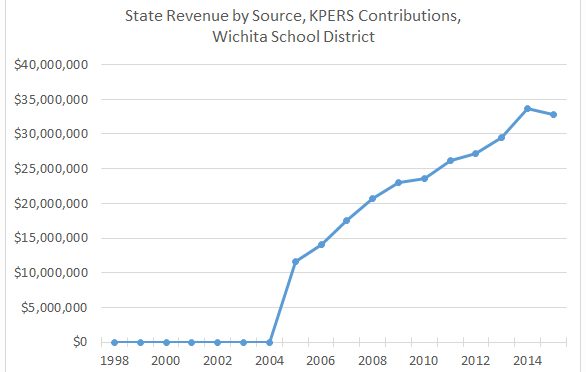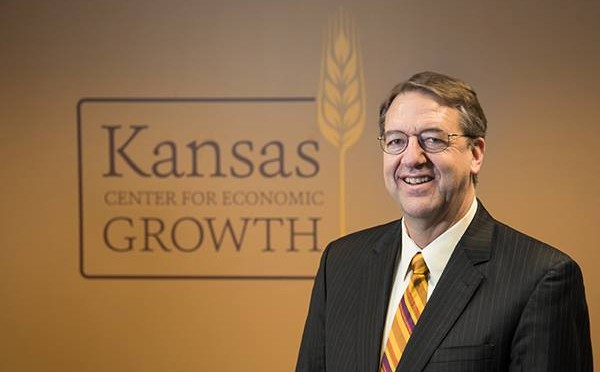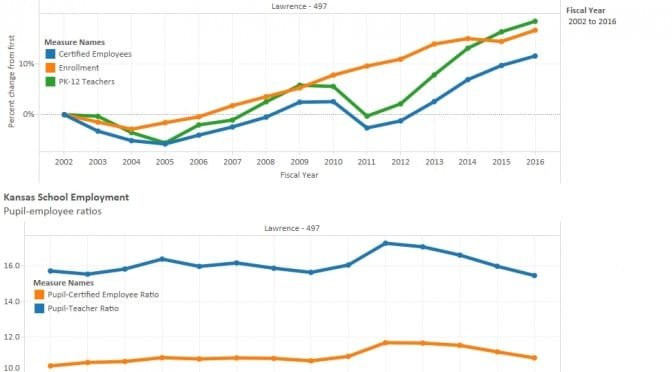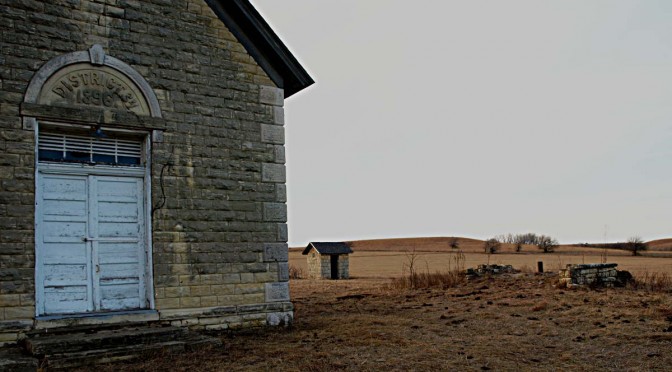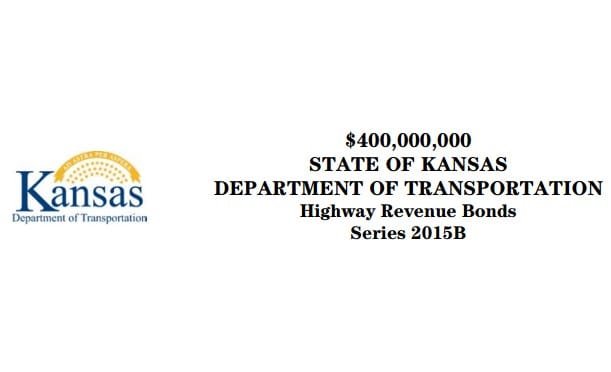A former Kansas government official criticizes Kansas Policy Institute.
I wouldn’t normally use a Facebook comment in a public way, but the comment was left in public, to a post on my Facebook profile. Plus, the writer is a former Kansas government official. He’s Gary Sherrer, who has been Lieutenant Governor, Secretary of Commerce, and Chair of the Kansas Board of Regents.

First, Sherrer wrote this: “They count KAPERS payments that in the past were direct state payments. Now they send them to the school districts and within hours transfer them back to the state yet it shows as increased revenue in the local budget. Same $s just an accounting trick.”
This is a standard argument of Kansas public school spending advocates, which is that because of a change in the way teacher retirement funds (KPERS contributions) are handled, it looks like the state is spending more on schools, when in fact it is not.
In response, Kansas Policy Institute noted this: “According to Dale Dennis, KPERS funding was last sent directly to KPERS in 2004; it has since been sent directly to school districts included in reported school funding totals.”1
Dale Dennis is Deputy Commissioner at Kansas State Department of Education and head of Fiscal and Administrative Services.
 Even though Dennis is the state’s top education finance official, we don’t have to rely solely on him to illustrate changes in KPERS payment accounting. Information from the Wichita public school district2 shows the same. Here I’ve plotted the funding sent by the state of Kansas to USD 259 for KPERS contributions. As Dennis indicated, in 2005 the Wichita school district started receiving money from the state for KPERS. Prior to that year it received none.
Even though Dennis is the state’s top education finance official, we don’t have to rely solely on him to illustrate changes in KPERS payment accounting. Information from the Wichita public school district2 shows the same. Here I’ve plotted the funding sent by the state of Kansas to USD 259 for KPERS contributions. As Dennis indicated, in 2005 the Wichita school district started receiving money from the state for KPERS. Prior to that year it received none.
So if anyone wants to claim that KPERS payment accounting has been changed in order to be deceptive, why don’t we ask former governor Kathleen Sebelius why it happened under her watch?
Additionally, the argument that the KPERS funds are held by school districts for just hours or minutes is trivial. If the state allowed school districts to hold the funds for two days, two weeks, two months — would that make any meaningful difference? Instead, school districts ought to be thankful that the taxpayers of the state of Kansas cover part of employee retirement costs. But we don’t hear those thanks, just complaints.
Sherrer is correct on one thing: There are people in government who may be touting increased KPERS payments as increased school spending. Two things: KPERS spending is school spending. If not that, what is it? Second, these people are not Kansas Policy Institute. KPT takes efforts to separate KPERS spending from other school spending.3
Here’s something else from Sherrer: “Anther example- local property taxes collected for schools was always sent directly to the school district- after all it is local not state tax $s. Now the local sends it to the state, then it is sent to school districts. Again, same dollars but trick accounting to make it look like increased state spending.”
I’ve never seen KPI make the claim that Sherrer makes. Others may make it, but KPI takes steps to adjust figures for this change.4
Finally, Sherrer writes: “When is Kansas Policy going do do research on the financial disaster called the Kansas budget?” Well, KPI has done this, providing a detailed roadmap. In my reporting on KPI’s plan, I wrote:
The State of Kansas has implemented tax reform that reduces the tax burden for Kansans. A remaining challenge that has not yet been tackled is spending reform, that is, aligning Kansas state government spending with a smaller stream of tax revenue. Critics of tax reform say the Kansas budget is a mess or a train wreck, pointing to projections of large deficits before long. Tax increases or service cuts will be required to balance the budget, contend critics.
In a policy brief released today, Kansas Policy Institute presented a plan for bringing the budget in balance while retaining low tax rates (and future reductions) and accommodating projected future spending needs for Medicare and schools.
You can more about the plan at For Kansas budget, balance is attainable.
—
Notes
- Trabert, Dave. State school board member should practice what he preaches. https://kansaspolicy.org/state-school-board-member-practice-preaches/. ↩
- USD 259 Comprehensive Annual Financial Report for 2015, State Revenue by Source, Governmental Funds, and USD 259 Comprehensive Annual Financial Report for 2007, State Revenue by Source, Governmental Funds. ↩
- For example, see Dorsey, David. Non-KPERS funding sets another per-pupil record in 2015-16. https://kansaspolicy.org/non-kpers-funding-sets-another-per-pupil-record-in-2015-16/. ↩
- For example, see Parkes, Patrick. State school funding ranks high in Kansas. https://kansaspolicy.org/state-school-funding-ranks-high-in-kansas/. ↩










